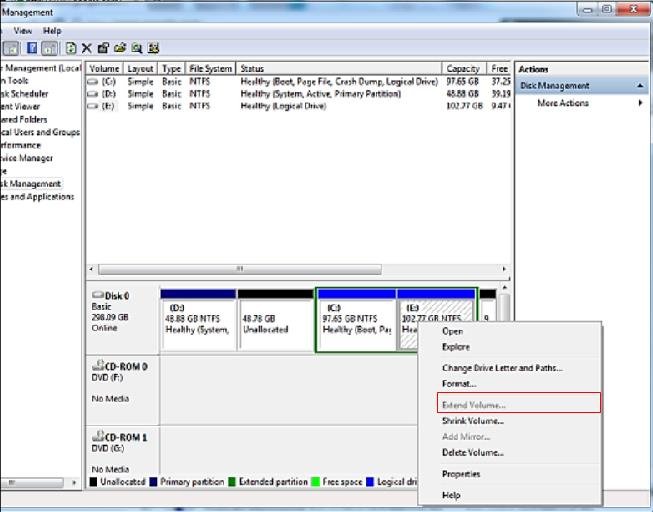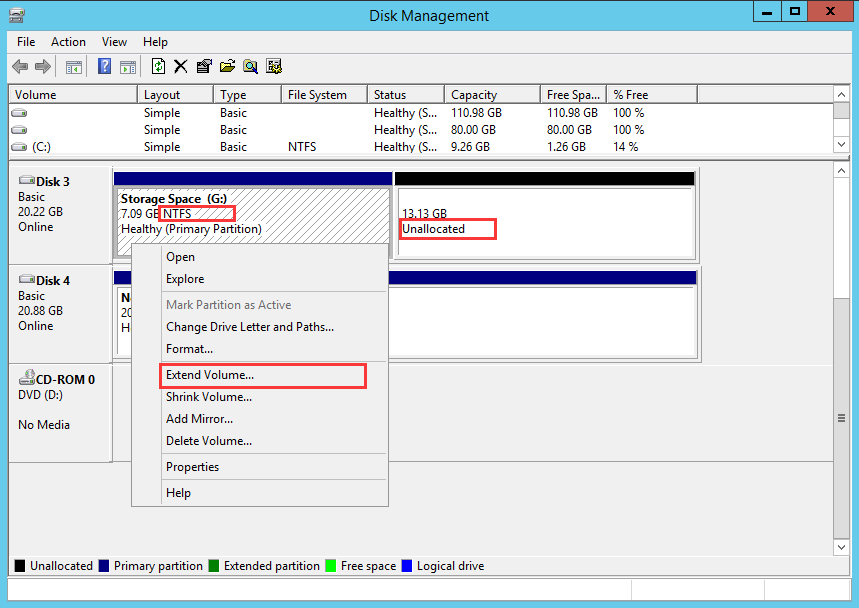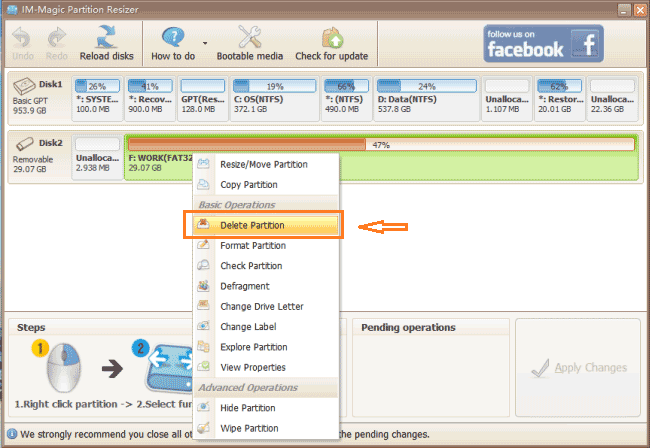

if you create a g:\ (50gb), you cannot expand f:\ You can expand f: as there is empty space after the partition. So in your pic.look at disk 1 for example.

When a storage is presented to the OS, you can partition the storage into partitions.so if the software partition already splits the storage into 2 (or more) and there is no space between the 2 partitions, the c:\ (or any drive with space after) cannot be expanded. This is more of a "Windows" issue than a VM issue. Do I need to do the same thing in future ?īasically, the OS does not know if its a VM or a physical server so the OS will act as if its on a physical server. If I move data from E:\ to new drive, and re-create E:\ and expand. For details, see Data Disk: Create New Volume (E:) with Additional Space.I do not understand what is meant by “ only allowed to add disk at end of disk”.
If volume (D:) already exists, you can create a new volume such as volume (E:) with the additional space and use the new volume as a data volume. For details, see Data Disk: Add Additional Space to Volume (D:). If volume (D:) already exists, you can add the additional space to volume (D:) and use it as a data volume. For details, see System Disk: Add Additional Space to Volume (C:) and Allocate Available Space to New Volume (D:) via the Shrink Function. These operations are also suitable for data disks. This section uses a system disk to describe how to perform extension operations for a Windows disk. The additional space cannot be shrunk if it has already been used. 
Only the available space can be shrunk and used to create the new volume.
 If the additional space has been added to volume (C:), you can shrink volume (C:), create a new volume with the available space, and use the new volume as a data volume. For details, see System Disk: Create New Volume (F:) with Additional Space. If volume (C:) already exists, you can create a new volume such as volume (F:) with the additional space and use the new volume as a data volume. For details, see System Disk: Add Additional Space to Volume (C:). If volume (C:) already exists, you can add the additional space to volume (C:) and use it as a system volume. This section uses Windows Server 2008 R2 Enterprise 64bit as the sample OS to describe the expansion methods:
If the additional space has been added to volume (C:), you can shrink volume (C:), create a new volume with the available space, and use the new volume as a data volume. For details, see System Disk: Create New Volume (F:) with Additional Space. If volume (C:) already exists, you can create a new volume such as volume (F:) with the additional space and use the new volume as a data volume. For details, see System Disk: Add Additional Space to Volume (C:). If volume (C:) already exists, you can add the additional space to volume (C:) and use it as a system volume. This section uses Windows Server 2008 R2 Enterprise 64bit as the sample OS to describe the expansion methods:








 0 kommentar(er)
0 kommentar(er)
